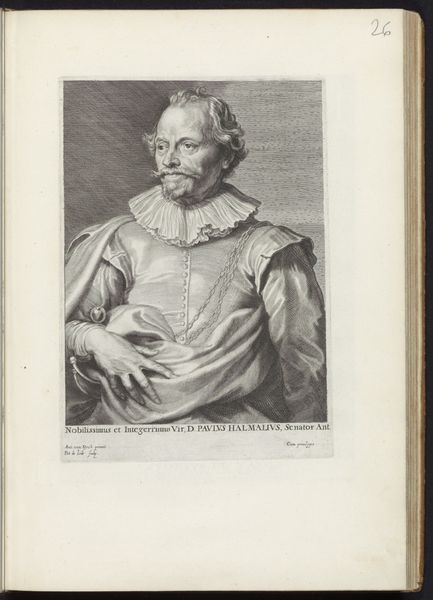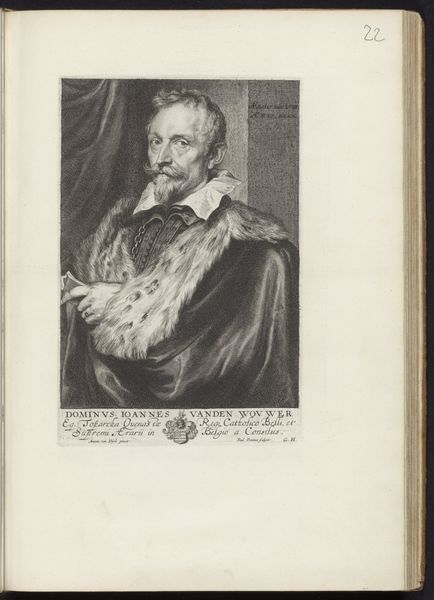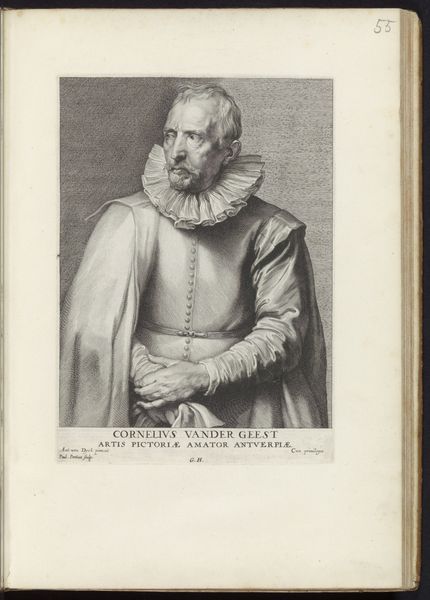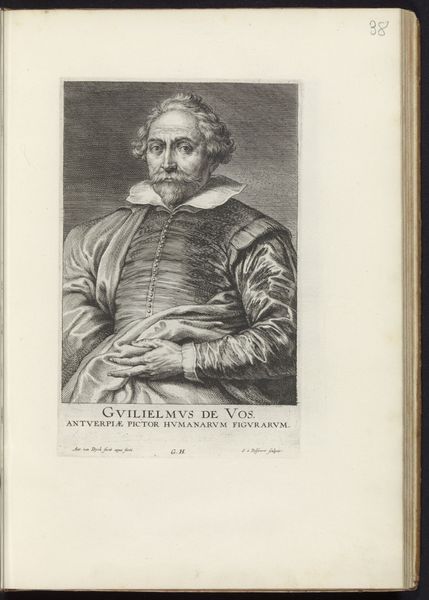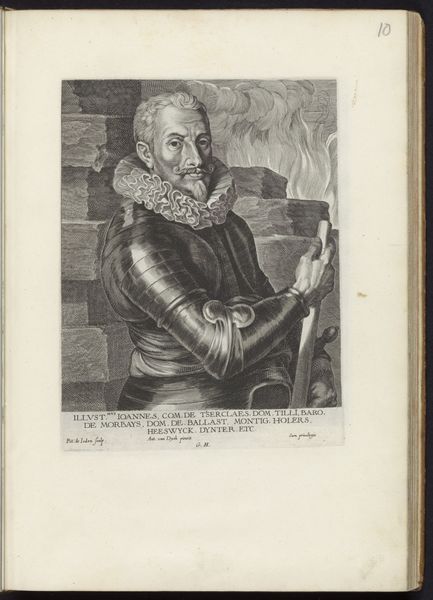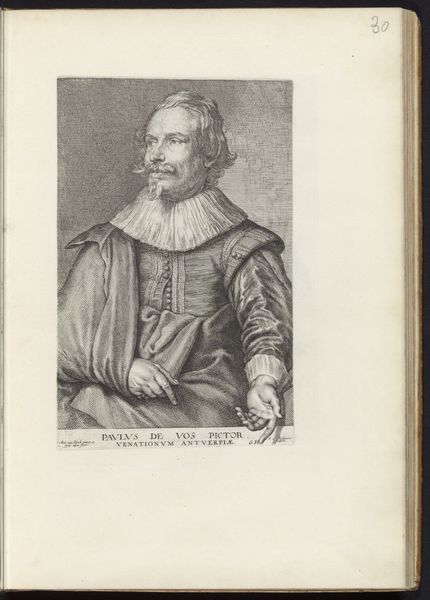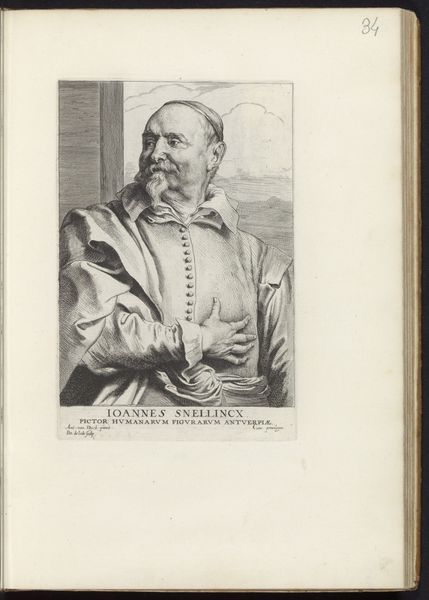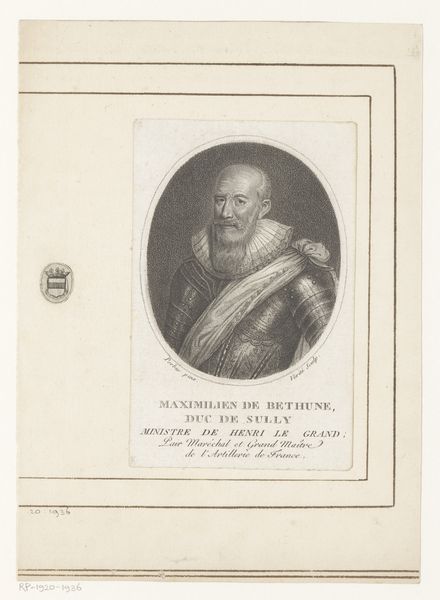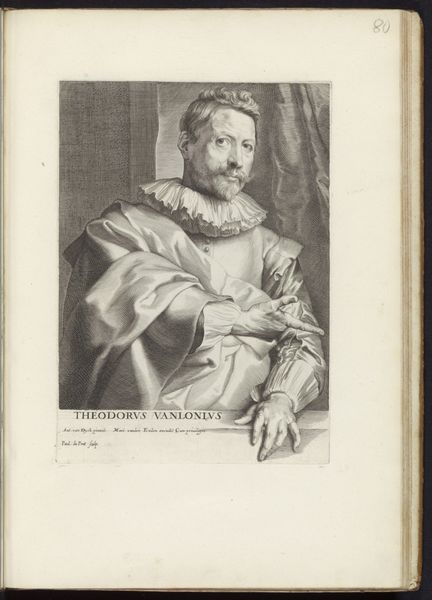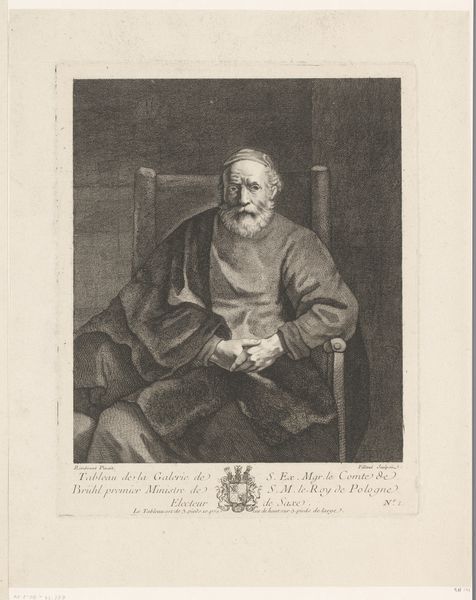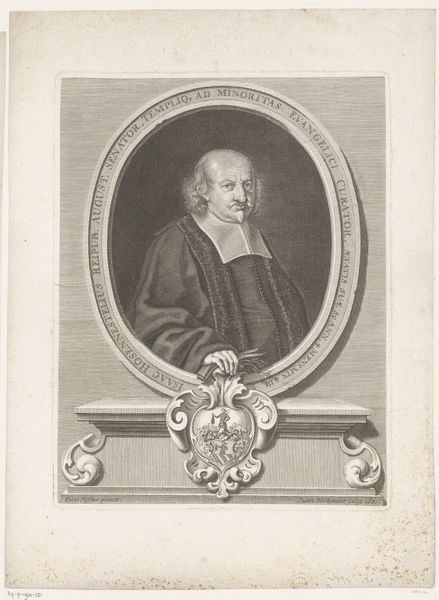
print, etching, engraving
#
portrait
#
aged paper
#
toned paper
#
baroque
# print
#
etching
#
old engraving style
#
personal sketchbook
#
history-painting
#
engraving
Dimensions: height 238 mm, width 168 mm
Copyright: Rijks Museum: Open Domain
Curator: What strikes me immediately about this engraving is the intense detail achieved through what must have been painstaking labor. The lines of the armor, the texture of the aged paper—you can almost feel the process of creation. Editor: Indeed. But more than the materiality, I’m drawn to the powerful visual statement it makes about status and power in 17th-century Europe. Let's not forget, Paulus Pontius likely created this somewhere between 1630 and 1646. It's a potent example of baroque portraiture used to immortalize and, arguably, idealize a military figure. Curator: Absolutely. The subject is titled "Portret van commandant Don Álvaro de Bazán." Pontius, through the techniques of etching and engraving, really emphasizes the materials representative of authority: armor, helmet, baton... Editor: Precisely! And consider Don Álvaro de Bazán himself. A celebrated admiral of the Spanish Armada. This isn't merely a portrait; it's a calculated projection of power and military might. Who was he representing, who did the artwork serve? Curator: That contrast of the cool steel and his somber expression gives us so much texture... It would be very interesting to study the specific techniques used to create those tones. Editor: And how those tones play into the wider historical narrative of the Spanish empire's rise and, ultimately, challenges. This image offers a glimpse into the complex intersection of war, leadership, and visual propaganda. What was he like, or more specifically, what did the Spanish monarchy WANT people to think of him? Curator: Viewing the object itself here in the Rijksmuseum brings it all to life, somehow—but the image's survival means the physical work of producing it paid off and has persisted as a document. Editor: Ultimately, artworks like this push us to investigate the sociopolitical framework of its time. Power, representation, labor: key themes that resonate through this striking portrait.
Comments
No comments
Be the first to comment and join the conversation on the ultimate creative platform.
